Return to MG Audio Design
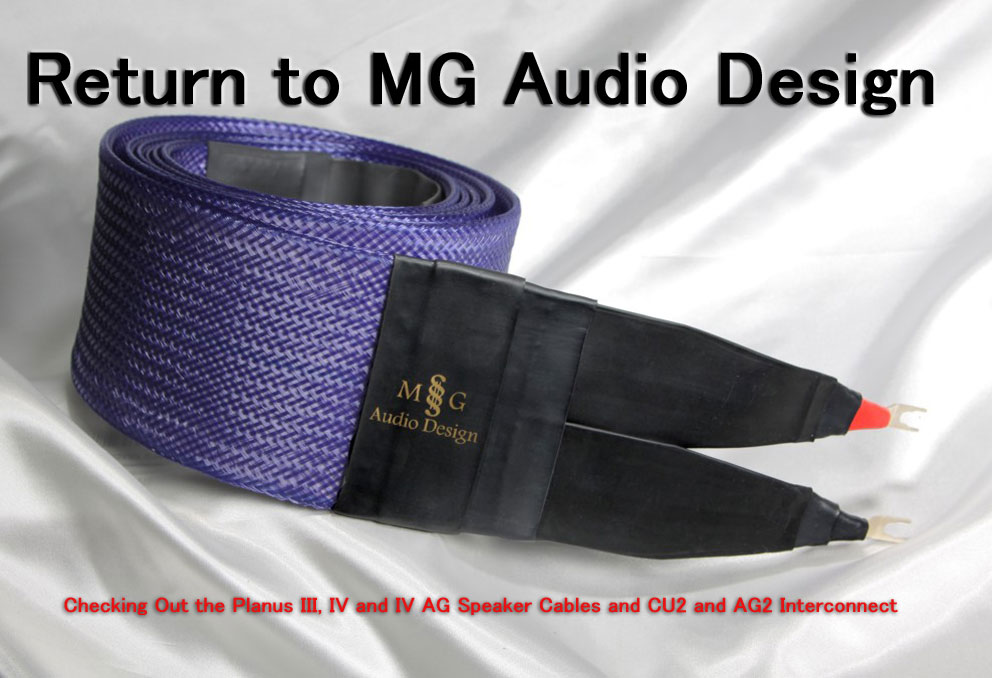
 It was back in 2012 when I was first introduced to MG Audio Design. The two principal owners of the company, Chief Product Developer Lee Matuszczak, and Chief Operations Officer Greg Graff had made an impressive debut with their Planus II speaker cables and AG1 and CU interconnects. They had garnered a lot of praise for their nicely built and fairly priced products including a “Most Wanted Component” designation from this publication. Over the past few years, I have seen them at a number of audio shows (usually sharing a room with another favorite of mine, Lawrence Audio loudspeakers), but it was during the last CES that I decided that I needed to get reacquainted with this Thornton, Colorado based company. They were using the MG Audio cables in a system including the Lawrence Audio Double Bass loudspeakers and Jeff Rowland electronics and getting jaw-dropping results. A few months later at AXPONA they were paired with Lawrence speakers again, but this time with Concert Fidelity and Weiss electronics. Needless to say, the results were equally amazing. But this time I stopped in and talked to the super-nice Greg Graff who told me that they had indeed added a few new products to their line and asked if I’d be interested in reviewing them. After about ten seconds of playing coy, I excitedly accepted his offer.
It was back in 2012 when I was first introduced to MG Audio Design. The two principal owners of the company, Chief Product Developer Lee Matuszczak, and Chief Operations Officer Greg Graff had made an impressive debut with their Planus II speaker cables and AG1 and CU interconnects. They had garnered a lot of praise for their nicely built and fairly priced products including a “Most Wanted Component” designation from this publication. Over the past few years, I have seen them at a number of audio shows (usually sharing a room with another favorite of mine, Lawrence Audio loudspeakers), but it was during the last CES that I decided that I needed to get reacquainted with this Thornton, Colorado based company. They were using the MG Audio cables in a system including the Lawrence Audio Double Bass loudspeakers and Jeff Rowland electronics and getting jaw-dropping results. A few months later at AXPONA they were paired with Lawrence speakers again, but this time with Concert Fidelity and Weiss electronics. Needless to say, the results were equally amazing. But this time I stopped in and talked to the super-nice Greg Graff who told me that they had indeed added a few new products to their line and asked if I’d be interested in reviewing them. After about ten seconds of playing coy, I excitedly accepted his offer.
I had actually had the MG Audio cables on my mind for some time. You see, when I reviewed their cables the first time, I had just revamped my entire system. I added a used pair of first generation Magnepan MG20s to replace my long-time faves, the Escalante Design Fremonts. I replaced the Bryston 10B electronic crossover (that came with the MG20s) with the Pass Labs XVR-1. I also added the Bel Canto M300 and REF1000M mono amps. And for the last year, the excellent and affordable Soundstring GEN II Platinum cables have been my reference. But Greg had been telling me (whenever I saw him at the shows) how much better their new products had gotten. And knowing how much better my reference system had gotten, I could hardly wait to install the new cables.
The new products are the Planus III and IV speaker cables and the CU2 interconnects, which are part of their “Reference Series.” They’ve also added the Planus IV ‘AG’ speaker cables and ‘AG2’ interconnects to their “Artistry Series.”
About the cables
All Planus speaker cables are designed to have minimum effect on the signal, therefore minimizing anything that can impart colorations on the music. Their design is based on physics, good engineering practices, and utilizing unique construction geometry. The cables came with spades on both ends but MG Audio went one step further. On one end of the speaker cables are spades made of silver (by Luminous Technology) and on the other end, the spades are made of rhodium (by Cardas). Both types of spades have different sonic characteristics. I got the best results with the silver ends attached to my amps and the rhodium ends attached to the speakers. Since the cables are not directional, you can mix and match configurations to tailor the sound even more.
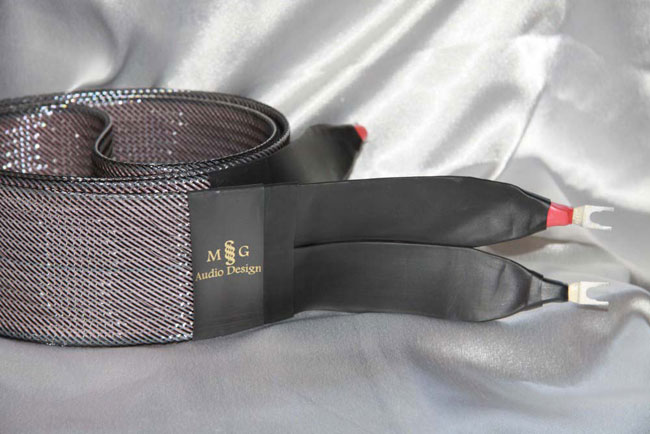
The Planus III speaker cables look identical to the Planus II cables I reviewed a few years ago, but I was told that they’re a vast improvement upon the Planus II (which was a highly regarded cable in its own right). The Planus IV is a slightly wider cable and uses a wider foil conductor than the Planus III. That conductor can be either a silver foil or copper foil. The silver version is believed to be more detailed while the copper is believed to be warmer sounding. These cables also use PTFE (Teflon) as a dielectric. The most visible difference is that the sleeve of the Planus IV is a rather cool looking purple nylon mesh. Finally the Planus IV AG, their top-of-the-line speaker cable, is also their most expensive cable primarily because it’s the most difficult to make and uses the largest silver conductor.
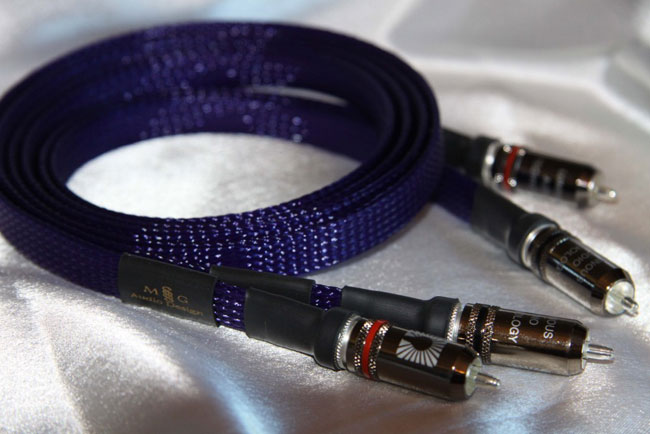
The Planus CU2 interconnect replaces CU that I previously reviewed. It was designed to be a step up from the CU and provide a good deal of the performance of the top-of-the-line AG2. The CU2 uses a cryogenically treated copper foil conductor and slightly different geometry than the original CU to dig out more detail and render a more lifelike soundstage. Like the Planus IV speaker cable, it comes sheathed in the purple nylon mesh jacket.
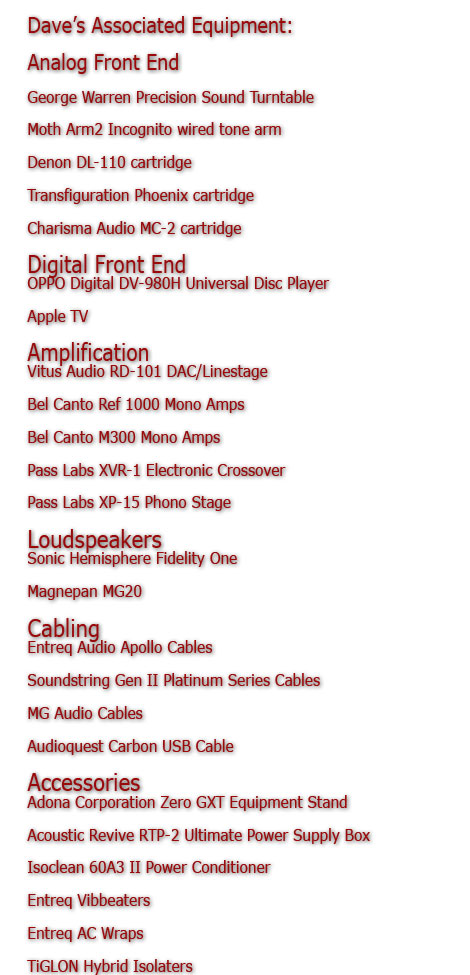 The AG2 is MG Audio’s best and most expensive interconnect. Its improvements came from lessons learned in the development of the Planus IV speaker cables. Its geometry has been improved upon from the AG1 and it also uses the same grey nylon mesh jacket as the other MG Audio products. The unbalanced (RCA) interconnects are terminated with some nice looking Luminous Audio Technology connectors and the balanced (XLR) cables use connectors made by Neutrik. I primarily used balanced cables in this review.
The AG2 is MG Audio’s best and most expensive interconnect. Its improvements came from lessons learned in the development of the Planus IV speaker cables. Its geometry has been improved upon from the AG1 and it also uses the same grey nylon mesh jacket as the other MG Audio products. The unbalanced (RCA) interconnects are terminated with some nice looking Luminous Audio Technology connectors and the balanced (XLR) cables use connectors made by Neutrik. I primarily used balanced cables in this review.
There are a couple of things to bear in mind about these MG Audio Design products. First, they are fragile. Remember, there is only a thin foil conductor with a thin Teflon dielectric on top wrapped in a thin nylon mesh jacket. That’s all, folks. So you won’t wanna try and fold or twist or torque these cables when connecting them to you system. It is possible to damage them. Second, the interconnects are unshielded. So be careful to keep them away from most other electrical devices, especially switching power supplies and radio transmitters. So just use common sense when handling these cables and they should perform flawlessly for as long as you own them.
System and Setup
After recently spending a lot of time listening to vinyl for some of the analog gear I’ve been reviewing lately, it was interesting to do some extended listening to my digital setup. My primary sources were the OPPO Digital DV-980H disc player (used as a transport) and Apple TV streaming device. Both were connected to my Vitus RD-101 DAC/Linestage. The OPPO used an Entreq Konstantin coaxial digital cable and the Apple TV used an AudioQuest OptiLink Forest optical cable. The Vitus RD-101 was connected to my Pass Labs XVR-1 electronic crossover via the CU2 interconnects.
Because my main setup requires that I used four channels of amplification, I used two pairs of AG2 interconnects: one pair between the XVR-1 high frequency outputs and my Bel Canto M300 mono amps and the other between the XVR-1 low frequency outputs and my Bel Canto REF1000M mono amps. The M300 amps were connected to the tweeter/midrange taps on my MG20s with the Planus IV speaker cables, and the REF1000M amps were connected to the woofer taps with the Planus III.
Towards the end of my listening sessions, I used a scaled down system comprised of the OPPO CD player, Vitus linestage, and Bel Canto REF1000M mono amps feeding a pair of Sonic Hemisphere Fidelity One loudspeakers. For this system I used the AG2 interconnects and Planus IV AG speaker cables. The power cords were all Soundstring GEN II Platinum.
Ready, Set, Listen
 When I first put them into my system, the CU2 and AG2 cables sounded just the way that I thought they would; good but leaving me looking for more. The music seemed a bit bright and edgy, but despite that, the soundstage was spacious and open. Listening to the song “Baby I’m A Fool” from Melody Gardot’s, My One And Only Thrill [Universal Records] I got a good sense of just how rich and breathy her voice is. Frankly, they didn’t sound all that different from my Entreq cables, which was a good thing. But these cables are also far less complex and substantially less than the Entreqs, so I was actually quite pleased with their level of performance compared to their cost. Like my Soundstring cables, these are very high-value products. Even still, I figured it would just be a matter of being patient until the cables had fully settled in. Historically, I’ve always found that cables truly sound their best after being in my system for about a week. So I allowed my iTunes library to run through the Apple TV streaming device and into the Vitus Audio DAC every evening for about a week before I did anymore listening. After that, I was ready to rock and roll… literally and figuratively.
When I first put them into my system, the CU2 and AG2 cables sounded just the way that I thought they would; good but leaving me looking for more. The music seemed a bit bright and edgy, but despite that, the soundstage was spacious and open. Listening to the song “Baby I’m A Fool” from Melody Gardot’s, My One And Only Thrill [Universal Records] I got a good sense of just how rich and breathy her voice is. Frankly, they didn’t sound all that different from my Entreq cables, which was a good thing. But these cables are also far less complex and substantially less than the Entreqs, so I was actually quite pleased with their level of performance compared to their cost. Like my Soundstring cables, these are very high-value products. Even still, I figured it would just be a matter of being patient until the cables had fully settled in. Historically, I’ve always found that cables truly sound their best after being in my system for about a week. So I allowed my iTunes library to run through the Apple TV streaming device and into the Vitus Audio DAC every evening for about a week before I did anymore listening. After that, I was ready to rock and roll… literally and figuratively.
iTunes has hosted a series of live concerts featuring a diverse group of performers and locales. One of my favorites is Lars Danielsson & Leszek Mozdzer on iTunes Live: Berlin Festival. It features brilliant performances by Swedish jazz musicians, Lars Danielsson (bass) and Leszek Mozdzer (piano). Of the ten performances on this recording, the two that I play the most are track 2, “Easy Money” and track 7, “Incignitor.” Easy Money features a dazzling performance by Mozdzer, who plays piano with speed and amazing dexterity. It is extremely important that the cables allow as clean a signal as possible to move through the system and into my speakers. The MG Audio cables did just that. My system was put together with neutrality being at the forefront.
I love to listen to music that is recorded in a live space rather than a studio, so I have a strong appreciation for cables that do not impart any artifacts onto the sound. Using the MG Audio cables, my system began to render music that was lifelike to a level I hadn’t experienced before. And that’s saying something, considering some of the fabulous cables that I’ve dealt with over the years, including my current references, the Soundstring GEN II Platinums and Entreq Apollos. Incignitor is a less dynamic tune but it allows you to hear into the performances of the duo and also gain a sense of the scale of the venue. These cables allow you to get into musical details without the sound coming off as cold and overly detailed or bright. This was especially true of the Planus IV AGs. Wow, do these cables transfer music. If it’s on the recording, it’s coming through your speakers. But not in an overly polished way, instead music is rendered with natural sounding, three-dimensional liveliness.
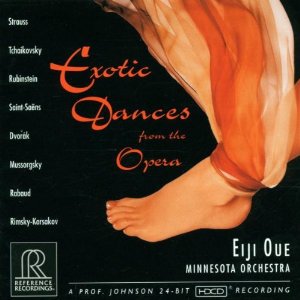 On “Dance of the Tumblers” from Eiji Oue and the Minnesota Orchestra’s Exotic Dances from the Opera [Reference Recordings] you can hear so many subtle cues that when listening to this live recording in a dark room, you get the sense of being at the performance. The frequency extremes pour from my speakers effortlessly. There is no fattening of the lower frequencies and certainly no artificial brightening of the high frequencies. I hate to engage in hyperbole but, in my system, these cables made my system sound damn-near… perfect. I simply did not get the feeling that the music was supposed to sound any differently or any better.
On “Dance of the Tumblers” from Eiji Oue and the Minnesota Orchestra’s Exotic Dances from the Opera [Reference Recordings] you can hear so many subtle cues that when listening to this live recording in a dark room, you get the sense of being at the performance. The frequency extremes pour from my speakers effortlessly. There is no fattening of the lower frequencies and certainly no artificial brightening of the high frequencies. I hate to engage in hyperbole but, in my system, these cables made my system sound damn-near… perfect. I simply did not get the feeling that the music was supposed to sound any differently or any better.
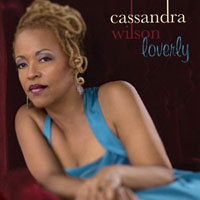 Vocal performances yielded similar results. Cassandra Wilson singing “The Very Thought of You” on her CD, Loverly [EMI], is a revelation. Her distinctively husky and intimate voice doesn’t normally move me the way it did when listening to my system with the MG Audio cables installed. The same can be said of Patricia Barber singing “Witchcraft” on her disc, Live: A Fortnight in France [EMI]. Again, not only is her unique voice fleshed out but you also get a feeling of experiencing the venue as well. It takes a cable that can faithfully retrieve and render everything from hi-hat cymbal crashes to the deepest strums of an upright bass. This is why we spend the money we do on this hobby of ours. You want to get as close to the real thing as you can. That’s what these cables help you to do.
Vocal performances yielded similar results. Cassandra Wilson singing “The Very Thought of You” on her CD, Loverly [EMI], is a revelation. Her distinctively husky and intimate voice doesn’t normally move me the way it did when listening to my system with the MG Audio cables installed. The same can be said of Patricia Barber singing “Witchcraft” on her disc, Live: A Fortnight in France [EMI]. Again, not only is her unique voice fleshed out but you also get a feeling of experiencing the venue as well. It takes a cable that can faithfully retrieve and render everything from hi-hat cymbal crashes to the deepest strums of an upright bass. This is why we spend the money we do on this hobby of ours. You want to get as close to the real thing as you can. That’s what these cables help you to do.
When I listened to the scaled down system, using only the Bel Canto REF1000M mono amps driving the Sonic Hemisphere speakers with the OPPO CD player as my source, it confirmed my feelings about the AG2 interconnects and Planus IV AG speaker cables. I played Rob Wasserman’s Duets [MCA] and by the time I had listened to the first two tracks, “Stardust” featuring Aaron Neville and “The Moon Is Made of Gold,” featuring Ricky Lee Jones, I was completely smitten with these cables. “Holographic vocal portrayal” was among the notes I had written down along with “wide and deep stage” and “maggies love these.” I should clarify something. When I called this a “scaled down” system, I only meant in the number of components used. Make no mistake this was still a very big and dynamic sounding system. The MG Audio cables made even more so.
In comparison to my other reference cables, the Swedish-made Entreq Apollos and Soundstring GEN II Platinums, they are all capable of rendering nicely layered and detailed soundstages, and top-to-bottom imaging is fantastic with them all. But with the Entreq cables you have to consider the cost. The MG Audio cables are a fraction of the cost of those exceptional cables which makes them a better value. Sonically, the MG Audio cables give up very little to the Entreqs, except at the frequency extremes. And only at elevated volume levels is this even noticeable. With the Soundstring cables, things are reversed. From a cost perspective, the Soundstring cables are as good a value as the MG cables. But sonically, the MG cables, especially those darned Planus IV AG speaker cables that I can’t stop thinking about, simply do something special with my maggies.
Conclusion
Psychologically, I want to think that there is something to my feeling that these flat cables are a synergistic match for my flat speakers, because I’ve convinced myself that I simply have to have these cables. But my girlfriend does a good job of pointing at the calendar and reminding me of just how close we are to the holidays and that tax time is just around the corner… bitch.
Anyway, look I love these cables. Their design is actually quite simple but very well executed and their quality of construction is superb. If I had a quibble it would be that MG Audio doesn’t put the model name on their cables. I kept looking at them and trying to remember, “Is this the Planus II or III or IV AG?” and “Was it the CU2 or AG2 that was purple?” But a minor quibble like that goes away when you’re simply just listening to music. Isn’t that the way it’s supposed to be?
Just like in 2012, these new MG Audio Design cables are “highly recommended.” But unlike before, these cables are destined to be a part of my reference system. The holidays can’t last forever. Tax time? Well, that’s a different story.


dave thomas
Specifications
Price:
Planus III speaker cable: 6’ pair $1,500; 8’ pair $2,000*; 10’ pair $2,500
Planus IV speaker cable: 6’ pair- $2,400; 8’ pair- $3,200; 10’ pair- $4,000
Planus IV AG speaker cable: 6’ pair- $4,800; 8’ pair-$6,400; 10’ pair- $8,000
Planus CU2 interconnect: 1 meter pair $700; 1.5 meter pair $950
Planus AG2 interconnect: 1 meter pair- $1,600; 1.5 meter pair-$2,300
Contact:
MG Audio Design, LLC
2902 East 137th Place
Thornton, CO 80602
Email: info@mgaudiodesign
Website: http://mgaudiodesign.com
Stereo Times Masthead
Publisher/Founder
Clement Perry
Editor
Dave Thomas
Senior Editors
Frank Alles, Mike Girardi, Russell Lichter, Terry London, Moreno Mitchell, Paul Szabady, Bill Wells, Mike Wright, and Stephen Yan,
Current Contributors
David Abramson, Tim Barrall, Dave Allison, Ron Cook, Lewis Dardick, John Hoffman, Dan Secula, Don Shaulis, Greg Simmons, Eric Teh, Greg Voth, Richard Willie, Ed Van Winkle, Rob Dockery, Richard Doron, and Daveed Turek
Site Management Clement Perry
Ad Designer: Martin Perry





Be the first to comment on: Return to MG Audio Design